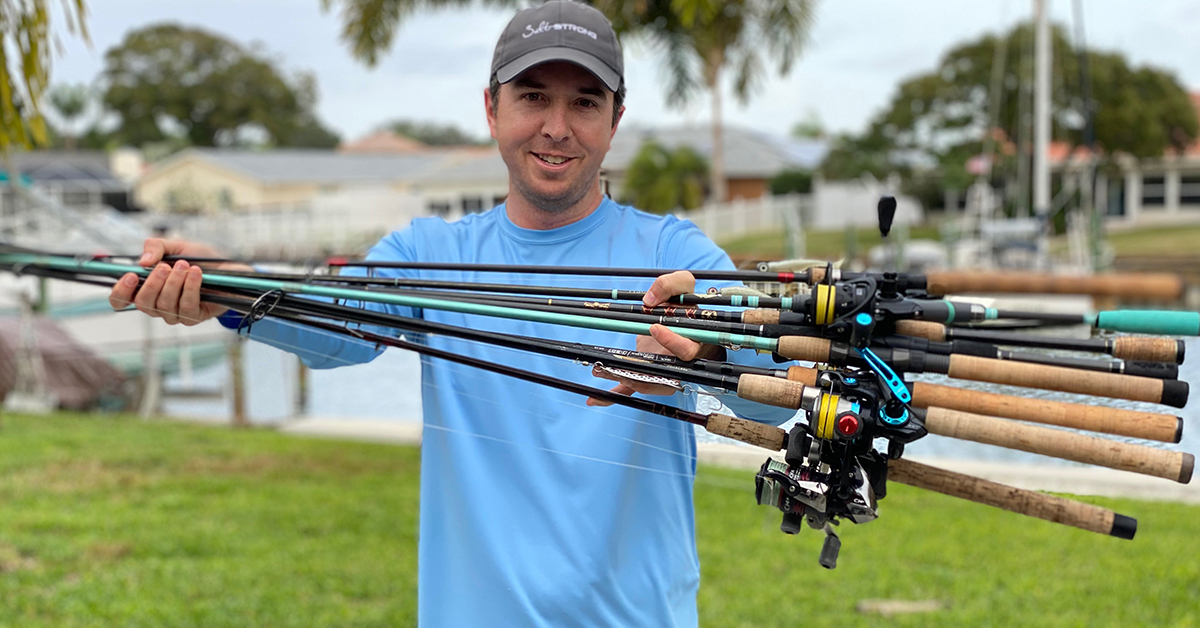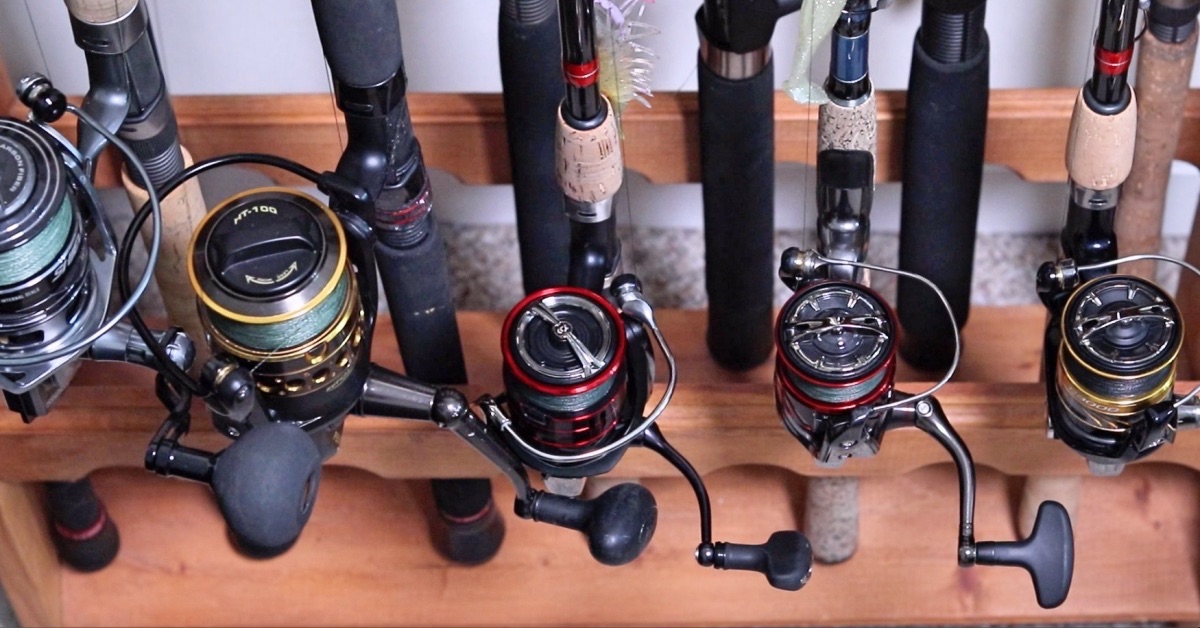When it comes to inshore fishing, choosing the right fishing rod is crucial. Whether you are a seasoned angler or a beginner, finding the perfect rod size can make all the difference in your fishing experience. Factors such as the type of fish you are targeting, the water conditions, and your personal preferences can all affect which rod size is best for you.
In this article, we will delve into the world of inshore fishing rods and explore what size rod is ideal for various conditions. From light tackle to heavy duty, we will cover the different rod sizes available and provide tips on how to choose the best one for your next inshore fishing adventure. So, grab your fishing rod and let’s dive in!

H2: What Size Rod for Inshore Fishing?
Inshore fishing is a popular and exciting way to catch fish, and choosing the right size rod is an important part of the process. The right size rod will help you catch more fish and make the experience more enjoyable. In this article, we will discuss the factors to consider when choosing a rod size for inshore fishing.
H3: Types of Fish You Want to Catch
When considering the size of your inshore fishing rod, the type of fish you want to catch is an important factor. Different fish species require different rod sizes. For example, if you want to catch small fish, you can use a light rod, while for larger fish, you need a rod with more power.
It is important to understand the species of fish in the area you will be fishing, and the typical size of those fish. This will help you choose the right rod size for your needs.
H3: Length of the Rod
The length of your inshore fishing rod is another important factor to consider. Longer rods are generally better for casting longer distances, while shorter rods are better for casting closer to the boat.
In general, a rod between 6 and 7 feet is a good choice for inshore fishing. Longer rods are better for fishing in open water, while shorter rods are better for fishing in tighter spaces.
H3: Power of the Rod
The power of your inshore fishing rod is another important consideration. Power refers to the amount of force required to bend the rod. A more powerful rod can handle larger fish, while a lighter rod is better for smaller fish.
In general, a medium power rod is a good choice for inshore fishing. This will give you the versatility to catch a variety of fish sizes without sacrificing too much sensitivity.
H3: Action of the Rod
The action of your inshore fishing rod refers to how much the rod bends when it is under load. A fast action rod bends less, while a slow action rod bends more.
For inshore fishing, a medium-fast action rod is a good choice. This will give you a good balance between sensitivity and power.
H3: Material of the Rod
The material of your inshore fishing rod is also an important consideration. Rods can be made from a variety of materials, including graphite, fiberglass, and composite materials.
Graphite rods are lightweight and sensitive, making them a good choice for inshore fishing. Fiberglass rods are more durable and flexible, but can be heavier. Composite rods are a good balance between the two.
H3: Handle of the Rod
The handle of your inshore fishing rod is an often-overlooked factor in choosing the right size. A comfortable handle can make a big difference in your fishing experience.
Cork handles are a popular choice for inshore fishing rods, as they are lightweight and comfortable. EVA foam handles are also a good choice, as they are durable and provide good grip.
H3: Guides on the Rod
The guides on your inshore fishing rod are important for casting and reeling in fish. The number and placement of the guides can affect the performance of the rod.
In general, a rod with more guides will perform better, as it will distribute the load more evenly. Look for rods with high-quality guides made from materials like ceramic or stainless steel.
H3: Reel Size
The size of your reel is also an important consideration when choosing a rod size for inshore fishing. The reel should match the rod size and power to ensure optimal performance.
In general, a reel size between 2500 and 4000 is a good choice for inshore fishing. This will give you enough line capacity and power to handle a variety of fish sizes.
H3: Benefits of Choosing the Right Size Rod
Choosing the right size rod for inshore fishing has many benefits. It will help you catch more fish and make the experience more enjoyable. A properly sized rod will also be more comfortable to use, reducing fatigue and strain on your body.
H3: Inshore Fishing Rod Sizes – Comparison Table
To help you choose the right size rod for inshore fishing, we have created a comparison table of popular sizes and their recommended uses:
| Rod Size | Recommended Uses |
| ——– | —————- |
| 6′ – 6’6″ | Small fish, tight spaces |
| 6’6″ – 7′ | All-around use |
| 7′ – 7’6″ | Open water, larger fish |
Vs.
Choosing the right size rod for inshore fishing can be overwhelming, but by considering the type of fish you want to catch, the length, power, action, material, handle, guides, and reel size, you can make an informed decision. A properly sized rod will improve your fishing experience and help you catch more fish.
Key Takeaways: What Size Rod for Inshore Fishing?
- Choosing the right rod size is crucial for inshore fishing success.
- A rod between 6 and 7 feet is ideal for inshore fishing.
- Medium power is best for inshore fishing, allowing you to catch a variety of fish species.
- A fast action rod is recommended for inshore fishing to ensure a quick hookset and better control over your catch.
- Consider the type of fishing you’ll be doing and the size of the fish you’ll be targeting when choosing your rod.
- Don’t forget to match your rod with the appropriate reel and line for maximum efficiency and success.
In conclusion, selecting the right rod for inshore fishing is a critical decision that can make or break your experience. Keep in mind the appropriate length, power, and action for your specific needs, and don’t forget to match your rod with the appropriate reel and line. With these key takeaways in mind, you’ll be well on your way to a successful inshore fishing trip.

Best Inshore Rod and Reel Size for Inshore Flats Fishing
In conclusion, selecting the right size rod for inshore fishing is a crucial aspect of the fishing experience. It is essential to consider the type of fish you are targeting, the fishing location, the fishing technique, and your personal preferences. Investing in a good quality rod that matches your needs will significantly enhance your chances of catching more fish and make your fishing experience much more enjoyable.
Remember, the size of the rod is not the only factor to consider. You should also pay attention to the rod’s power, action, and material. By doing so, you can customize your fishing gear to fit your individual needs and preferences, which will ultimately lead to more successful and enjoyable fishing trips. So, take the time to do your research, consult with other anglers, and make an informed decision when selecting the right size rod for inshore fishing. Happy fishing!
